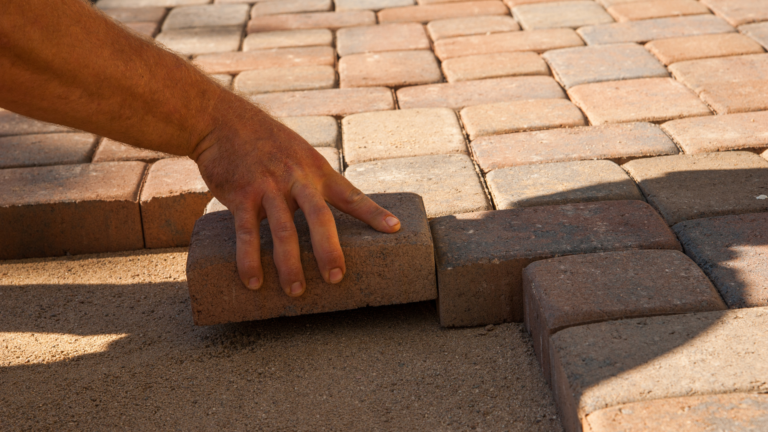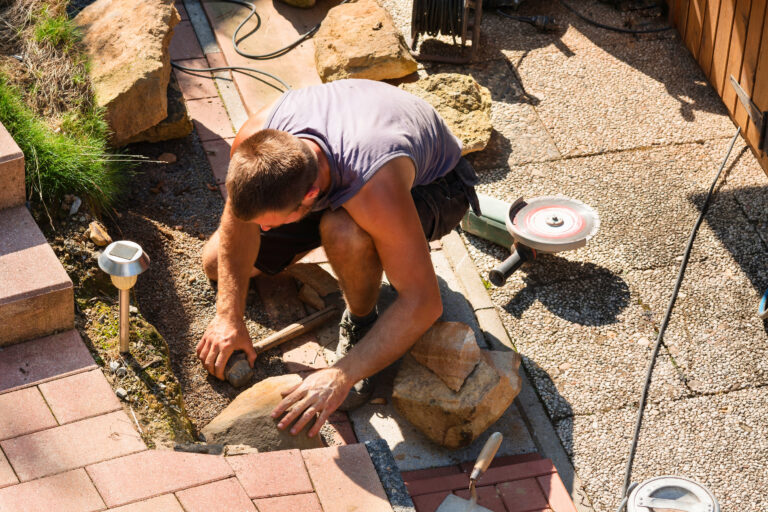Fire Pits – Advantages and Disadvantages: A Concise Overview

The popularity of fire pits has been growing in recent years, becoming a central feature in many backyard landscapes and outdoor living spaces. A fire pit can not only create a warm and cozy atmosphere to share with friends and family, but it can also be used as an alternative cooking source, providing added utility and enjoyment. However, as with any trend or investment, it’s essential to weigh the advantages and disadvantages to make an informed decision on whether a fire pit is the right choice for your outdoor space.
On the positive side, fire pits add a unique aesthetic appeal that can elevate the look and feel of any backyard. Serving as a focal point for social gatherings, they can create lasting memories and encourage spending more time outdoors. Furthermore, fire pits can increase the usability of your outdoor space during colder months, extending the period you can enjoy your backyard. Additionally, for those who enjoy the pleasure of cooking outdoors, the fire pit also presents an opportunity to experiment with a variety of cooking techniques and recipes.
Conversely, there are some drawbacks that may make a fire pit an unsuitable option for certain individuals or spaces. One major concern is safety, especially for those with young children or pets. The open flame presents a hazard that requires constant attention and proper precautions. Furthermore, fire pits can be a potential source of environmental and air quality concerns in densely-populated or wooded areas, where the risk of fires or smoke pollution may cause issues. Finally, while it may enhance some property values, the investment and maintenance costs associated with a fire pit can be significant, which should be considered in light of the potential benefits.
Advantages of Fire Pits
Enhancing Outdoor Ambiance
Fire pits can greatly improve the ambiance of an outdoor space. They serve as an attractive focal point and can make an ordinary backyard feel cozy and inviting. The gentle flicker of the flames creates a soothing atmosphere, making it the perfect spot for relaxation and contemplation. Fire pits also create natural lighting, bathing the area in a warm and inviting glow, which enhances the appearance of the surrounding space.
Social and Entertainment Benefits
For those who love to entertain, a fire pit can provide the perfect setting for outdoor gatherings. It creates a comfortable and visually appealing space for guests to gather and socialize. The fire pit can become the main attraction of your outdoor space, and its warmth encourages people to unwind, fostering deeper connections and conversations with friends and family.
- Outdoor events: Fire pits are an excellent addition to events like barbecues, garden parties, and informal get-togethers.
- Seasonal versatility: The warmth generated by fire pits allows you to enjoy your outdoor space well into the cooler months.
Cooking and Warmth
Besides serving as an attractive centerpiece in your backyard, fire pits can also offer practical uses such as cooking and generating warmth.
- Cooking: A fire pit acts as an open flame cooking source, where you can prepare various dishes like grilled meats, vegetables or even marshmallows for a classic s’mores treat. Some fire pits are designed with cooking grates or rotisseries to enhance the outdoor cooking experience.
- Warmth: As temperatures drop, the warmth generated by the fire pit can make it comfortable to spend time outdoors. This added heat source extends your outdoor living well into the fall or even on chilly summer nights.
Disadvantages of Fire Pits
Safety Concerns and Hazards
Fire pits can present a number of safety concerns and hazards, especially if not used properly. One major issue is the danger posed by embers and smoke. Embers can easily drift away from the fire pit and onto nearby combustible materials, potentially starting a fire. Smoke produced by the fire can be harmful to one’s health, especially for those with respiratory issues.
Here are some risks associated with fire pits:
- Fire hazard: Potential for nearby combustibles to catch fire
- Embers: Risk of a sudden gust of wind spreading the fire
- Smoke: Irritation to eyes, lungs, and throat, especially for sensitive individuals
Maintenance and Upkeep
Another disadvantage of fire pits is the necessary maintenance and upkeep. Owners must regularly remove ash and ashes to maintain optimal performance and safety. Additionally, keeping a fire pit clean and well-maintained can be a time-consuming task. Here are some common fire pit maintenance tasks:
- Regularly remove ash and debris
- Replace worn or damaged parts
- Clean and inspect fire pit structure for integrity
Moreover, fire pits may require specific types of fuel and fire starters, which can be inconvenient and add to the overall cost of operation.
Environmental Impact
Lastly, fire pits have potential negative impacts on the environment. The burning of wood and other combustible materials produces greenhouse gases and particulate matter, which can contribute to air pollution and climate change.
| Impact Area | Issue |
|---|---|
| Air pollution | Smoke, soot, and particulate matter released |
| Climate Change | Greenhouse gases emitted by combustion |
It’s important to consider the environmental impact of fire pits when deciding whether to incorporate one into your outdoor space. Alternatives to traditional wood-burning fire pits, such as gas or propane options, may have a lower environmental impact while still providing the warmth and ambiance of a fire.
Types of Fire Pits
When choosing a fire pit for your backyard or outdoor space, it’s important to consider the type of fuel you want to use. There are three main types of fire pits: wood-burning fire pits, propane fire pits, and natural gas fire pits. Each type has its advantages and disadvantages, depending on your preferences and needs.
Wood-burning Fire Pits
Wood-burning fire pits are the most traditional and common type of fire pit. They use logs or firewood as their fuel source, which can create a cozy atmosphere with their crackling sounds and pleasant aroma.
Advantages:
- Authentic campfire experience
- Tend to be more affordable
- Can cook food directly on the fire
Disadvantages:
- Require constant supply of wood
- Create ash and embers that need to be cleaned
- May not be allowed in some areas due to air quality regulations
Propane Fire Pits
Propane fire pits use propane tanks as their fuel source, which provides a cleaner and more controlled burn compared to wood fires. They come in a variety of designs and sizes, making them a popular choice for those looking for an easy-to-use, modern fire pit.
Advantages:
- Easy to use and control
- Minimal maintenance
- No smoke or ash produced
Disadvantages:
- Requires propane tank refills
- Less authentic fire experience
- Tend to be more expensive than wood-burning fire pits
Natural Gas Fire Pits
Natural gas fire pits are similar to propane fire pits, but they use natural gas lines as their fuel source. They offer the same clean and convenient experience as propane fire pits but require a more permanent installation.
Advantages:
- Easy to use and control
- No need for fuel refills
- Environmentally friendly option
Disadvantages:
- Requires professional installation
- More expensive than other types of fire pits
- Less portable due to permanent gas line connection
Considerations for Installation and Use
Local Regulations and Permits
Before installing a backyard fire pit, it is essential to research local regulations governing their use. Some municipalities require permits while others may have restrictions on the type of fire pits allowed or have specific safety guidelines to follow. Make sure to obtain any necessary permits and comply with all regulations set by your local government.
Space and Material Requirements
Considering the space requirements for a fire pit is important to ensure safety and functionality. A fire pit should be at least 10 feet away from any vertical structures, such as fences or buildings, and have a properly prepared surface below it. Common materials used for fire pit construction include:
- Stone
- Brick
- Metal
- Concrete
It is crucial to choose materials that can withstand high temperatures and are suited for outdoor use. A protective screen, fire-resistant mat, or pad is recommended for additional safety.
Long-term Value and Cost Considerations
Installing a fire pit has the potential to increase your property value as it creates an appealing outdoor area, enhancing its overall appeal. However, it’s important to consider the long-term cost implications. The following table summarizes costs associated with various fuel types:
| Fuel Type | Advantages | Disadvantages | Cost Considerations |
|---|---|---|---|
| Wood | Natural ambiance; Easy to source | May produce excessive smoke | Low to moderate |
| Propane | Clean-burning; Easy ignition | Requires propane tank & fuel refill | Moderate to expensive |
| Natural Gas | Clean-burning; Convenient pipeline connection | Requires professional installation | Expensive |
| Bioethanol | Clean-burning; Environmentally friendly | Limited heating capacity | Moderate to expensive |
While wood-burning fire pits are generally less expensive in terms of fuel costs, propane and natural gas offer a cleaner burn with less smoke. Bioethanol presents an environmentally friendly option, though slightly more costly. Additionally, remember that maintenance and any necessary repairs may also incur expenses over time.






